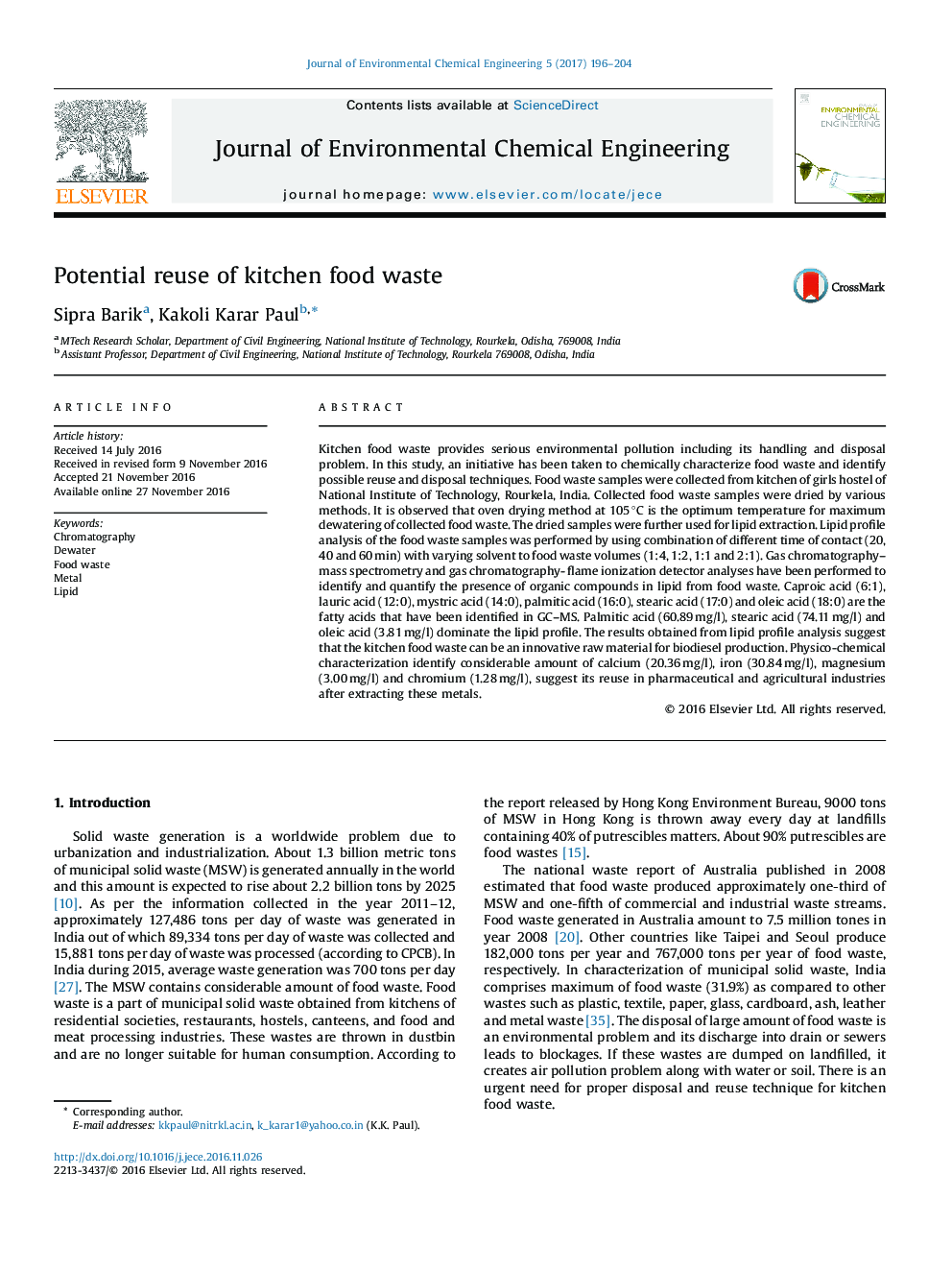| کد مقاله | کد نشریه | سال انتشار | مقاله انگلیسی | نسخه تمام متن |
|---|---|---|---|---|
| 6477308 | 1362584 | 2017 | 9 صفحه PDF | دانلود رایگان |
Kitchen food waste provides serious environmental pollution including its handling and disposal problem. In this study, an initiative has been taken to chemically characterize food waste and identify possible reuse and disposal techniques. Food waste samples were collected from kitchen of girls hostel of National Institute of Technology, Rourkela, India. Collected food waste samples were dried by various methods. It is observed that oven drying method at 105 °C is the optimum temperature for maximum dewatering of collected food waste. The dried samples were further used for lipid extraction. Lipid profile analysis of the food waste samples was performed by using combination of different time of contact (20, 40 and 60 min) with varying solvent to food waste volumes (1:4, 1:2, 1:1 and 2:1). Gas chromatography-mass spectrometry and gas chromatography- flame ionization detector analyses have been performed to identify and quantify the presence of organic compounds in lipid from food waste. Caproic acid (6:1), lauric acid (12:0), mystric acid (14:0), palmitic acid (16:0), stearic acid (17:0) and oleic acid (18:0) are the fatty acids that have been identified in GC-MS. Palmitic acid (60.89 mg/l), stearic acid (74.11 mg/l) and oleic acid (3.81 mg/l) dominate the lipid profile. The results obtained from lipid profile analysis suggest that the kitchen food waste can be an innovative raw material for biodiesel production. Physico-chemical characterization identify considerable amount of calcium (20.36 mg/l), iron (30.84 mg/l), magnesium (3.00 mg/l) and chromium (1.28 mg/l), suggest its reuse in pharmaceutical and agricultural industries after extracting these metals.
Journal: Journal of Environmental Chemical Engineering - Volume 5, Issue 1, February 2017, Pages 196-204
